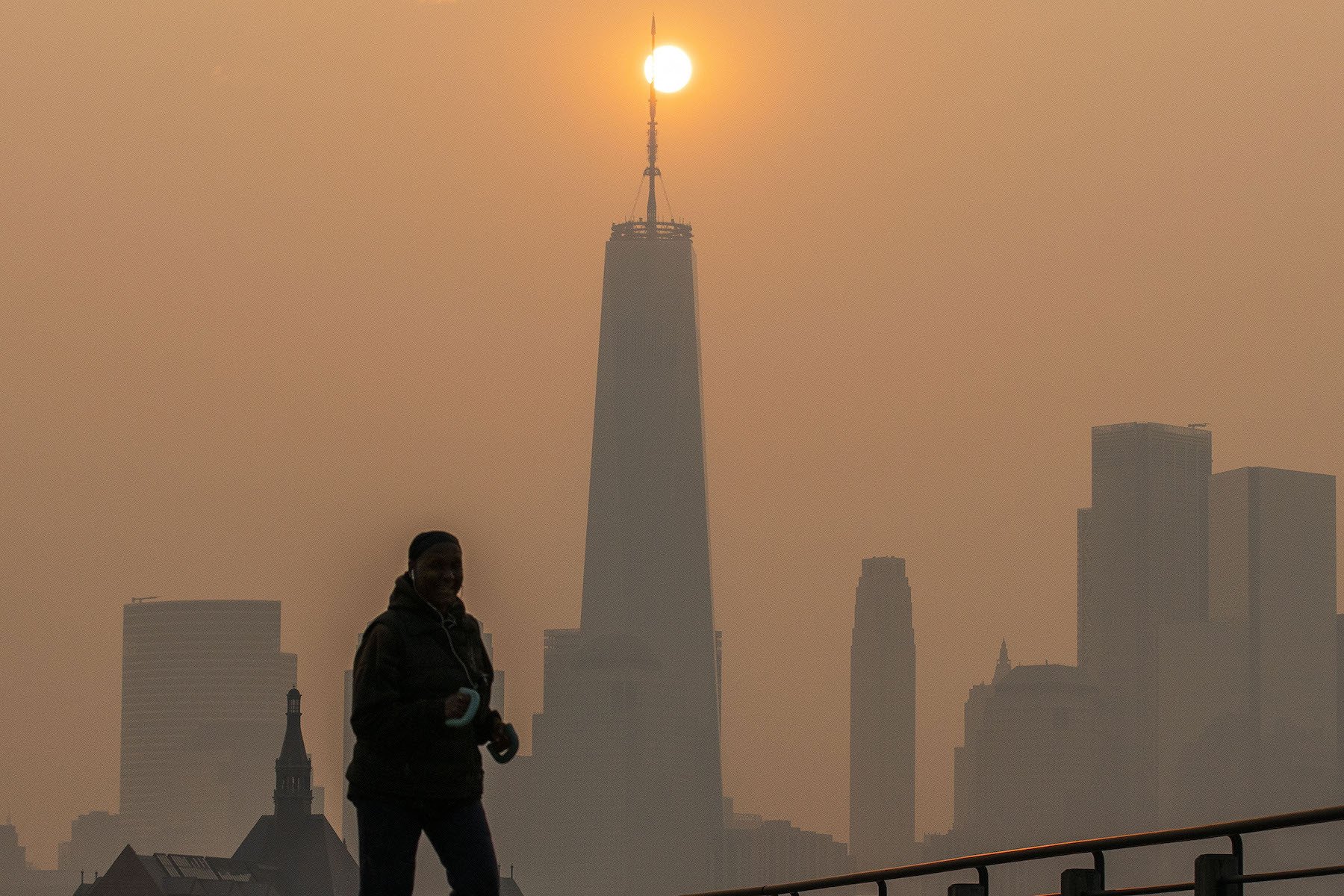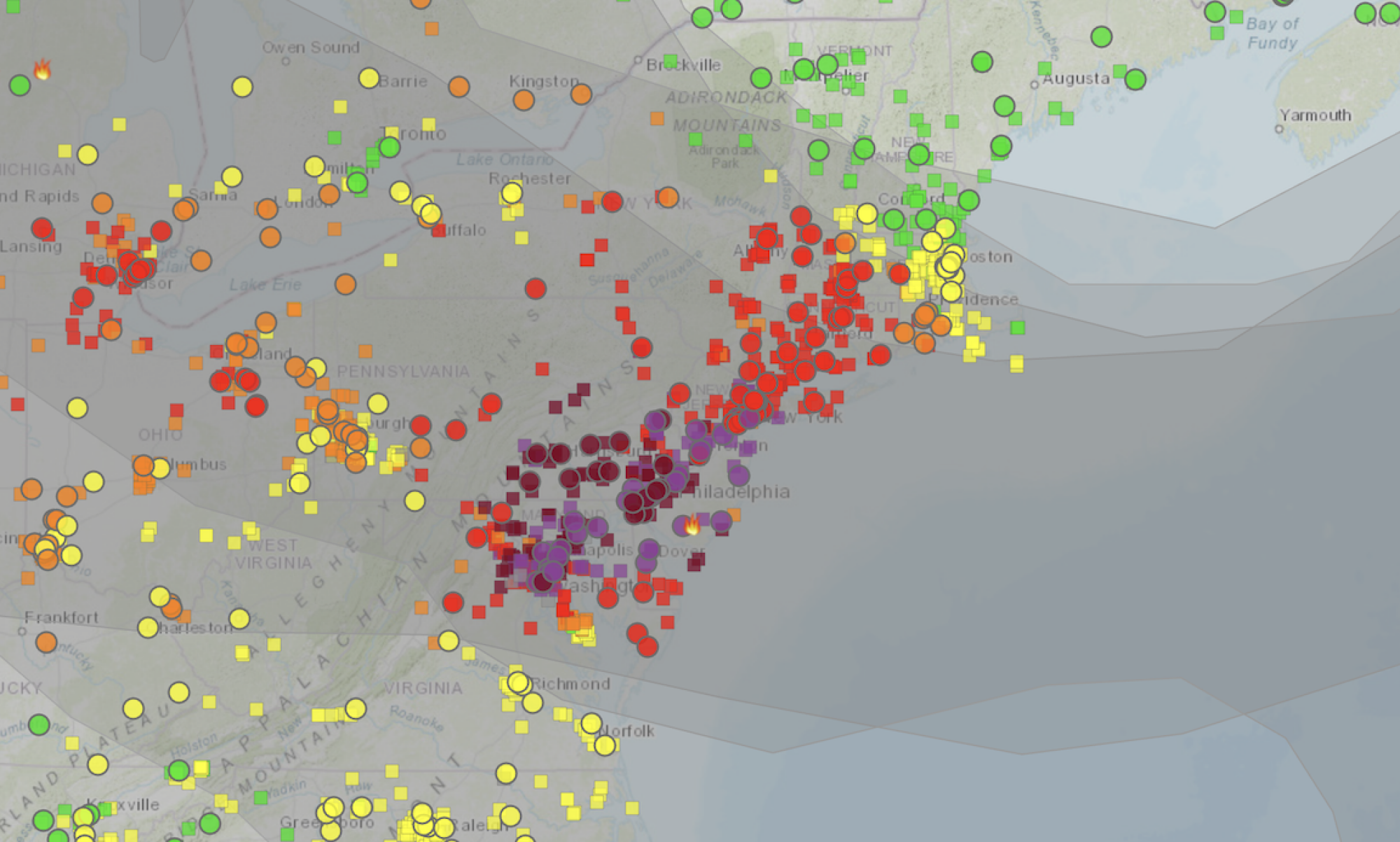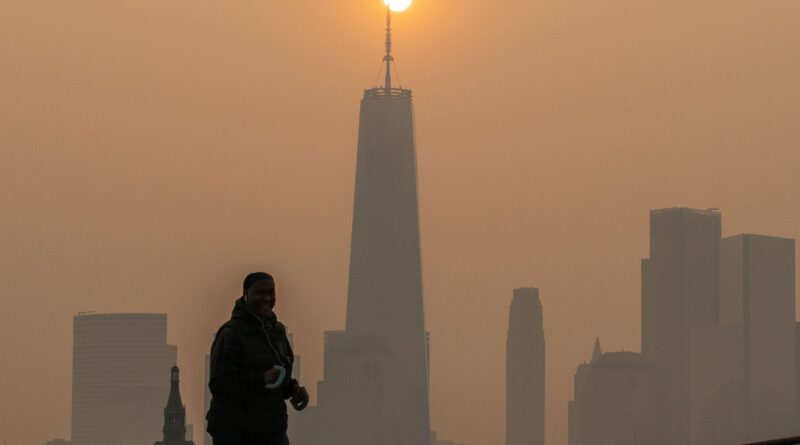How to check your air quality as wildfire smoke pours into the U.S.

Wildfire smoke has been rushing into the U.S. like an avalanche. Seen on satellites, it looks like an unstoppable force.
Now that the thick smoke — filled with tiny particles that are unhealthy to breathe — is blanketing different regions and heavily-populated areas, you’ll likely want to know how bad the air is, and what air quality ratings mean.
Crucially, you’ll also want to seek guidance from your local public health agencies. For example, on June 8 the Philadelphia Department of Public Health advised residents in the smoky city to “Avoid going outdoors as much as possible.”
Influxes of extreme smoke may come and go in the coming days and throughout the summer, as Canada is experiencing one of its worst wildfire seasons on record. Here’s how to keep close tabs on your air.
How to check air quality
A reliable air quality website with monitors across the U.S. is maintained and frequently updated through a partnership of federal agencies, including the EPA, NASA, and NOAA. It’s called airnow.gov.
“Agencies all over the country send their monitoring data to AirNow for display,” the AirNow website explained.
How to use AirNow:
-
After entering the website, you’ll be asked to enter your zip code, city, or state. All options will provide useful information. If you enter a city, like Philadelphia, the site will display air quality information, a map, and forecast. If you enter a state, a list of different regions and their respective air qualities will appear.
-
If you’d like to see a map of air quality over the U.S. and zoom into your location, visit fire.airnow.gov. An expansive map of air quality readings, from sensors across the U.S., will appear. Use the zoom tool on the bottom right of the website display, or your computer’s touchpad, to zoom into the locations you need.

What do the air quality index colors mean?
The different colors you see show different qualities of air, based on the AQI, or Air Quality Index, which starts at zero and runs to 500. The higher the number, the worse the air quality.
For example, in the morning on June 8, the AQI in Philadelphia was 243. It fell into the category of “Very Unhealthy,” which is shown in purple.
The colors green and yellow are what you ideally want to see on any given day. Other colors are either unhealthy for certain groups, or unhealthy or even harmful for everyone. Here’s a rundown, based on the government’s AQI rating system:
-
Green: Good — “Air quality is satisfactory, and air pollution poses little or no risk.”
-
Yellow: Moderate — “Air quality is acceptable. However, there may be a risk for some people, particularly those who are unusually sensitive to air pollution.”
-
Orange: Unhealthy for Sensitive Groups — “Members of sensitive groups may experience health effects. The general public is less likely to be affected.”
-
Red: Unhealthy — “Some members of the general public may experience health effects; members of sensitive groups may experience more serious health effects.”
-
Purple: Very Unhealthy — “Health alert: The risk of health effects is increased for everyone.”
-
Maroon: Hazardous — “Health warning of emergency conditions: everyone is more likely to be affected.”
Can I go outside if the air is unhealthy or bad?
Listen to the guidance from your local public health agency. If the air is “unhealthy” or worse, they’ll likely recommend staying inside if you can.
If you must go outside amid wildfire smoke, limit your time and wear a specific mask (detailed below). “Limit time spent outdoors by only performing essential activities and take frequent breaks indoors,” says the EPA.
A mask that will protect you from inhaling smoke particles is an N95 respiratory mask, the same type commonly worn during the worst of the pandemic. “N95 respirator masks provide the best protection from wildfire smoke. Cloth masks will not protect you from wildfire smoke,” the EPA emphasizes.
Here is more guidance and details on effective smoke masks from airnow.gov
Want more science and tech news delivered straight to your inbox? Sign up for Mashable’s Light Speed newsletter today.
Why is the air quality so bad now?
Though generally wildfires can be normal and healthy parts of an ecosystem, today’s fires can burn into unnatural infernos, producing unhealthy smoke that adversely impacts people’s health hundreds of miles away. Different regions, at different times of year, will have a variety of influences stoking flames. Yet the continually warming atmosphere, which turns vegetation into profoundly parched fuel, is often a significant contributor in extreme fires, as are overgrown and mismanaged forests, invasive plants, and other factors.
